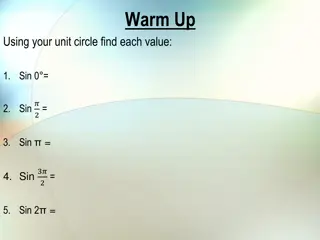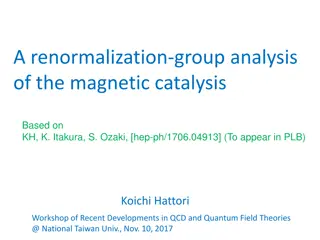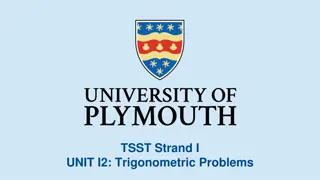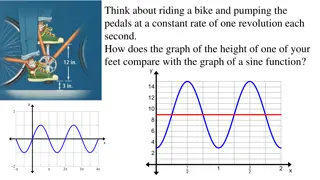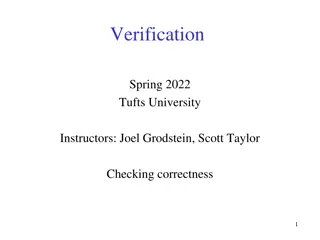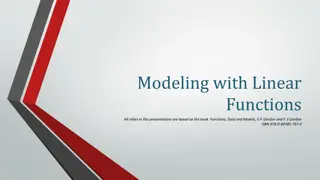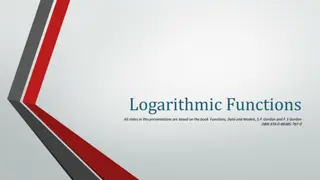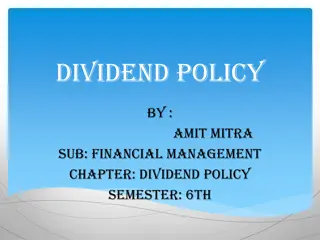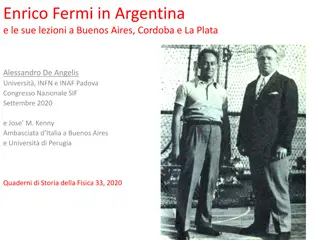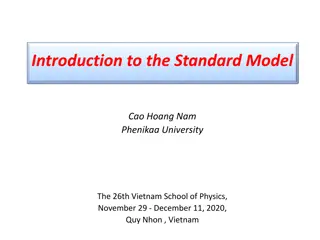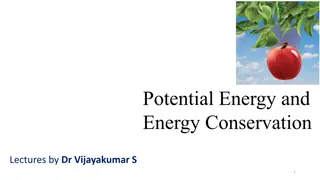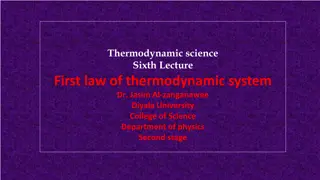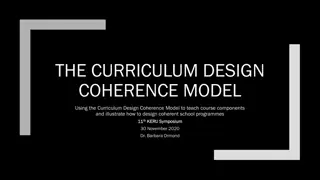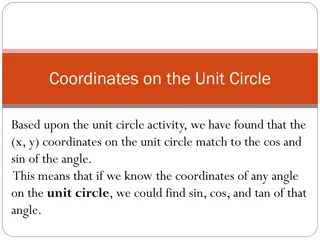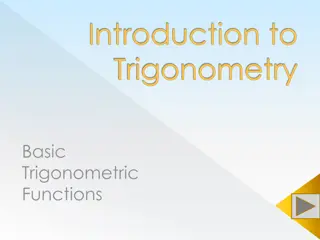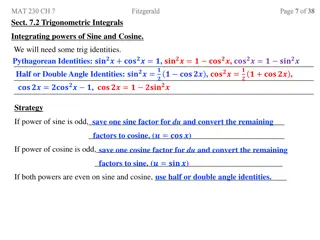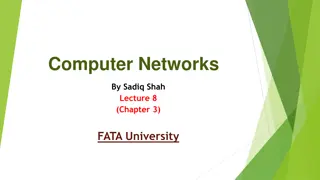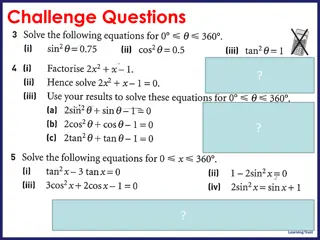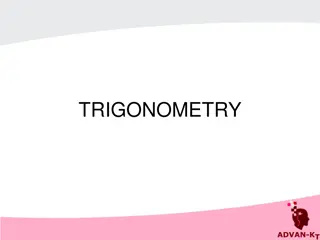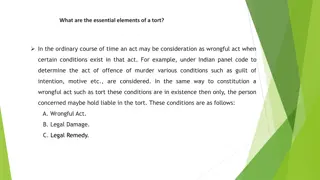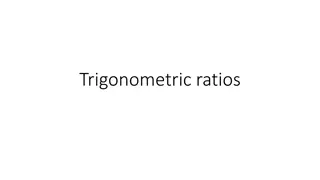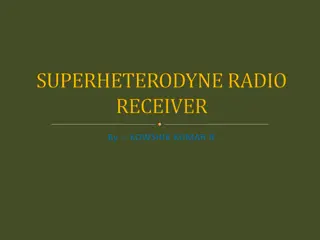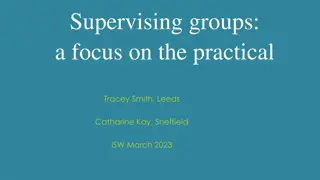Renormalization Group Theory & Sine-Gordon Model Lectures
Mariana Malard presents a series of lectures discussing Renormalization Group Theory and the Sine-Gordon model. Starting with a conceptual overview and general procedures, the lectures progress to topics like expressing S in terms of Green's functions, bosonization, and Kosterlitz-Thouless Phase Diagram. Dive into the details and insights shared in these informative sessions.
Download Presentation

Please find below an Image/Link to download the presentation.
The content on the website is provided AS IS for your information and personal use only. It may not be sold, licensed, or shared on other websites without obtaining consent from the author. Download presentation by click this link. If you encounter any issues during the download, it is possible that the publisher has removed the file from their server.
E N D
Presentation Transcript
Renormalization Group Theory & Sine-Gordon Model Mariana Malard
Renormalization Group Theory & Sine-Gordon Model SUMMARY OF THE LECTURES Lecture 1 January 16th Renormalization Group Theory Conceptual overview. General procedure 0: Define a field theoryAction. General procedure I: Decompose in slow and fast modes. General procedure II: Expressing S in terms of Green s functions.
Renormalization Group Theory & Sine-Gordon Model SUMMARY OF THE LECTURES Lecture 2 January 21st Renormalization Group Theory Finish general procedure II: Expressing S in terms of Green s functions. General procedure III:Averaging in the fast modes ground state. Sine-Gordon Model Conceptual overview. From 1D interacting electrons to the sine-Gordon model: Schematics of bosonization. The model. Red-marked items: updates on the original lecture plan.
Renormalization Group Theory & Sine-Gordon Model SUMMARY OF THE LECTURES Lecture 3 January 23rd Sine-Gordon Model Re-scaledAction for the sine-Gordon model. Renormalization group flows equations of the sine-Gordon model. Kosterlitz-Thouless Phase Diagram Red-marked items: updates on the original lecture plan. Gap
Renormalization Group Theory General procedure II: Expressing S in terms of Green s functions. Dyson equation: For our 2nd order expansion around the slow modes: The Green s function for the full residual Action in momentum-frequency space is thus:
Renormalization Group Theory General procedure II: Expressing S in terms of Green s functions. Rewriting the residual action:
Renormalization Group Theory General procedure II: Expressing S in terms of Green s functions. Chosen so that the linear term in the field disappears. Exercise Taking r(x) such that i.e. QUADRATIC in the field gives:
Renormalization Group Theory General procedure III: Averaging in the fast modes ground state Effective residual Action for the slow modes: Full ground state Fast modes ground state Slow modes ground state
Renormalization Group Theory General procedure III: Averaging in the fast modes ground state Green s function for the free original (i.e. in terms of the original - field) Action: From Eq. (34) to (37) in the review paper. Green s function for the free original Action projected on the fast modes subspace: https://arxiv.org/abs/1202.3481
Renormalization Group Theory General procedure III: Averaging in the fast modes ground state Effective residual Action for the slow modes: 2nd order in the interactions
Renormalization Group Theory General procedure III: Averaging in the fast modes ground state Effective residual Action for the slow modes: Recalling the original Action, we define an effective Action for the slow modes: To proceed one needs to compute the coefficients as and bs in the above expression for Seff for the field theory of interest. Here we will do that for the sine-Gordon model.
Sine-Gordon Model Conceptual overview The origin of the name is the Klein-Gordon equation. INTERACTING QUANTUM FIELD THEORY Bosonization Describes interactions with a strong pinning effect. Luttinger Liquid Models Ex.: Strongly interacting electron systems in 1D G-ology model Hubbard models
Sine-Gordon Model From 1D interacting electrons to the sine-Gordon model: Schematics of bosonization. Second-quantized tight-binding Hamiltonian for interacting electrons moving through a 1D lattice: electron-electron Coulomb repulsion ( V ) Hopping ( t ) + On-site (chemical) potential ( ) ? = 1, ,? lattice sites Reading reference: T. Giamarchi, Quantum Physics in One Dimension, Oxford University Press (2003) ? = spin orientation
Sine-Gordon Model From 1D interacting electrons to the sine-Gordon model: Schematics of bosonization. H0 can be analytically diagonalized by a Fourier transform: two spin-degenerate bands
Sine-Gordon Model From 1D interacting electrons to the sine-Gordon model: Schematics of bosonization. Low-energy theory: Linearize around the Fermi points and go to the continuum Fermion fields for right- and left-moving electrons in the continuum two spin-degenerate bands Fermion operator on the lattice
Sine-Gordon Model From 1D interacting electrons to the sine-Gordon model: Schematics of bosonization. Low-energy theory: Linearize around the Fermi points and go to the continuum Fermion fields for right- and left-moving electrons in the continuum two spin-degenerate bands Fermion operator on the lattice
Sine-Gordon Model From 1D interacting electrons to the sine-Gordon model: Schematics of bosonization. Low-energy theory: Linearize around the Fermi points and go to the continuum Fermion fields for right- and left-moving electrons in the continuum two spin-degenerate bands Fermion operator on the lattice backscattering
Sine-Gordon Model From 1D interacting electrons to the sine-Gordon model: Schematics of bosonization. Low-energy theory: Linearize around the Fermi points and go to the continuum Fermion fields for right- and left-moving electrons in the continuum two spin-degenerate bands Fermion operator on the lattice forward
Sine-Gordon Model From 1D interacting electrons to the sine-Gordon model: Schematics of bosonization. Low-energy theory: Linearize around the Fermi points and go to the continuum Fermion fields for right- and left-moving electrons in the continuum two spin-degenerate bands Fermion operator on the lattice dispervive Where is the g3-scattering? It is called umklap and requires fine tuning the filling to specifc ( commensurate ) values so it is typically absent.
Sine-Gordon Model From 1D interacting electrons to the sine-Gordon model: Schematics of bosonization. Bosonized low-energy H0: Dual boson fields Fermion fields Klein factors Keep track of the Fermi statistics Free bosons-theories, one for spin up and another for spin down
Sine-Gordon Model From 1D interacting electrons to the sine-Gordon model: Schematics of bosonization. Bosonized low-energy H0 in the charge and spin-basis: Free bosons-theories, one for the charge mode and another for the spin mode
Sine-Gordon Model From 1D interacting electrons to the sine-Gordon model: Schematics of bosonization. Bosonized low-energy full H in the charge and spin-basis: Free bosons-theory for the charge mode Velocities dressed by e-e Sine-Gordon model for the spin mode
Sine-Gordon Model From 1D interacting electrons to the sine-Gordon model: Schematics of bosonization. Bosonized low-energy full H in the charge and spin-basis:
Sine-Gordon Model The model. Hamiltonian: and canonically conjugated fields, i.e. Lagrangean:
Sine-Gordon Model Lagrangean: Action: Integration by parts Assuming field vanishes at the space-time boundaries.
Sine-Gordon Model Action: t -it, S -iS Imaginary-time rotation and Note: correspondence between the path integral and the partition function from statistical mechanics! The imaginary-time rotation yields a


